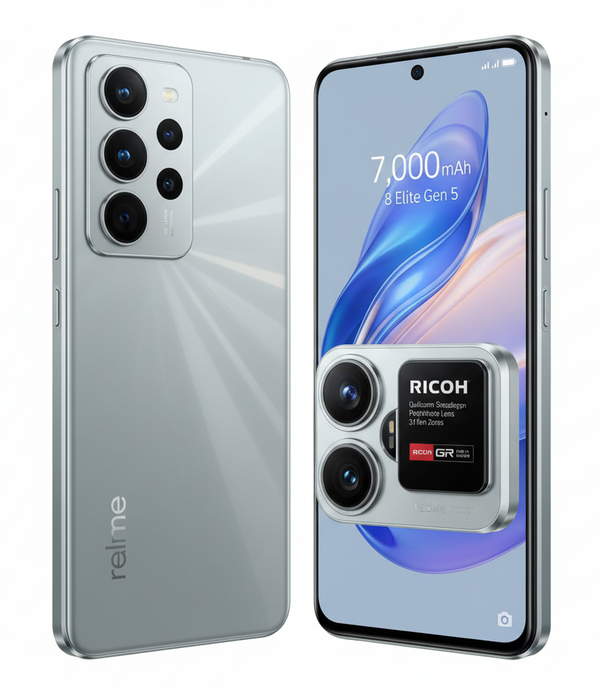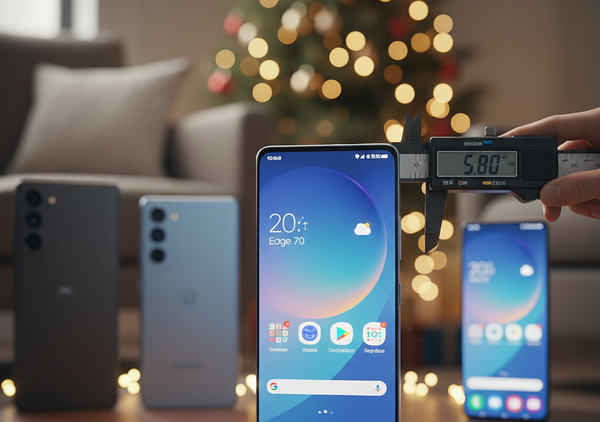OnePlus 15 vs Google Pixel 10 — Power vs AI, Which 2025 Flagship Wins?
The OnePlus 15 and Google Pixel 10 take opposite roads to smartphone greatness — one powered by brute strength and battery life, the other by AI brilliance and camera software mastery. Here’s a long, techy, and casual look at what each flagship truly offers in late 2025.

If you like phones that feel engineered rather than “designed by committee,” the late-2025 flagship cycle gave us two very different takes: the OnePlus 15, a power-and-battery monster that’s trying to win fans with raw specs and a refreshed imaging stack, and the Google Pixel 10, Google’s usual blend of camera smarts and AI polish built around the Tensor family. Below I’ll compare them across the things that actually matter day-to-day: design & screens, performance, cameras, battery & charging, software & AI, and value — plus my take on who should buy which.
Quick reality check (headline specs)
- OnePlus 15 — Snapdragon 8 Elite Gen 5, OnePlus’s new DetailMax imaging engine, huge battery (talks of a >7,000 mAh capacity on early specs), and OxygenOS/ColorOS family software moves. TechRadar+1
- Pixel 10 — Google’s Tensor G5 (AI-first silicon), triple camera on the base model (main + ultrawide + 5x telephoto on some SKUs), and deep Pixel AI features plus long Android update commitments. Google Store+1
Design & screen: slab vs refined slab
OnePlus has been leaning into premium materials and larger screens — think big, smooth surfaces, and (this round) some bold color/texture options like “Sand Storm.” The OnePlus 15 reportedly pushes for a large 6.7–6.8" class display with super-high refresh (165 Hz in some spec lists), optimized for gaming and extended battery life. The Pixel 10 keeps the Pixel aesthetic: smaller footprint (roughly 6.2–6.3" for the base model), matte sides, and a polished minimalist finish. If you prefer compact phones that fit one-handed, the Pixel 10’s base size is more approachable; if you binge video, game, or like huge batteries, the OnePlus’s larger panel wins.
(Design takeaway: OnePlus = bold & big; Pixel = refined & compact.)
Performance: silicon and real-world snappiness
Raw grunt: the OnePlus 15 with Snapdragon 8 Elite Gen 5 is built to be a sustained-performance champ in Android land — excellent for high-fps gaming, emulation, or heavy multitasking. The Pixel 10 leans on Google’s Tensor G5, which isn’t just about peak benchmarks — it’s tuned for on-device AI, efficient background tasks, and features that rely on the NPU/ML pipelines. In synthetic tests you can expect the OnePlus to outpace the Pixel on pure throughput; in everyday usage, Google’s chip + software optimizations keep the Pixel buttery in the typical workflows Google prioritizes (camera AI, Assistant, voice processing). TechRadar+1
(Performance takeaway: OnePlus = raw power; Pixel = AI-centric efficiency and optimizations.)
Cameras: different philosophies
This is where the two phones show their DNA.
OnePlus 15 — OnePlus moved away from the Hasselblad co-branding and launched its own DetailMax Engine for image processing. Early hands-on and sample write-ups suggest OnePlus aims for crisp, high-detail photos with a slightly different color/contrast profile than the Hasselblad era; the hardware remains competitive (big sensors, multi-cam arrays), and OnePlus seems focused on offering more overt processing control for users who like to tinker. Android Central+1
Pixel 10 — Google’s approach is still computational photography first. The Pixel 10 base apparently ships with a triple-camera setup (48MP main, ultrawide, and a 5x telephoto on some iterations), and Google layers features like Camera Coach, Super Res Zoom, and deep on-device AI to extract detail and reduce noise. The Pixel’s edge is the software pipeline: exceptional dynamic range, night modes, and zoom processing that often bests hardware with brute optics. Google Store+1
(Camera takeaway: Pixel = best-in-class computational processing and predictable results; OnePlus = very capable hardware + new processing engine that aims to be punchier and more tweakable.)
Battery & charging: marathon vs sprint
If a headline spec matters, OnePlus is going big: published specs and reliable leaks point to a massive battery (numbers in the 7,000+ mAh neighborhood on spec trackers) with very fast wired charging (80W class in some regions) — the kind of hardware that can realistically deliver multi-day endurance without the tradeoffs other flagships make. Android Headlines+1
Pixel 10 aims for “all-day” battery in a more conservative package. Google’s optimizations and Tensor power efficiency help, and Pixel’s AI features will try to balance background workloads to extend usable time. However, in raw endurance (and especially if you’re a heavy gamer or road-tripper), the OnePlus’s battery physics look better on paper.
(Battery takeaway: OnePlus = marathon battery life + fast wired charging; Pixel = balanced all-day with software efficiency.)
Software & AI: stock + features vs Oxygen/Color hybrid
Pixel 10 ships with stock Android flavored by Google’s AI features — think deeper Assistant integrations, Live Translate/real-time camera translation, Camera Coach, and an emphasis on on-device ML (Gemini/Model-powered features depending on how Google labels them). Google also continues a strong promise on updates (the Pixel line often gets multi-year OS + security support), which matters if you keep phones for 3–5 years. Google Store+1
OnePlus 15 runs OnePlus’s software (the brand has been merging OxygenOS with Oppo’s ColorOS work in subtle ways). Historically OnePlus has delivered a snappy, customizable shell that appeals to power users, with features angled at performance tuning, personalization, and developer options. The DetailMax Engine is a notable new software stack piece focused on imaging. If you like deeper UI customization and tuning, OnePlus still leans that way. TechRadar+1
(Software takeaway: Pixel = AI + longevity + clean Android; OnePlus = customization, performance settings, and new imaging software.)
Ecosystem and extras
- Pixel: Seamless integration with Google services (Photos, Assistant, Recorder, Live Translate), Pixel Watch/Buds features, and tighter software-hardware synergy for AI features. Google also tends to ship novel features that leverage the Tensor chip. WIRED
- OnePlus: Strong third-party accessory ecosystem, often bundles decent chargers, and is friendly to modders and power users. OnePlus’s partnerships and design choices try to balance premium feel with value.
Price & value
Exact MSRP varies by region and SKU, but the Pixel 10 typically sits at flagship pricing with Google taking premium for the Pixel experience and long updates. OnePlus historically undercuts the “big-named” flagships while offering similar hardware, and early region pricing and spec leaks suggest OnePlus will push competitive price/perf points (especially given the big battery offering). If raw specs per dollar are your metric, OnePlus often wins. If software longevity and camera consistency are your metric, Pixel may justify a higher price. Android Headlines+1
Who is this for?
- Buy the OnePlus 15 if you want maximum battery life, top raw performance, and a customizable OS — you care about benchmarks, long screen time, and faster wired charging.
- Buy the Pixel 10 if you prioritize camera reliability, seamless Google AI features, long software support, and a compact polished phone with the best day-to-day camera experience for most users.
Both phones are excellent, but they play different games. The OnePlus 15 is the spec-heavy, endurance-first challenger with a fresh imaging stack and serious hardware. The Pixel 10 is the polished, AI-powered flagship for people who want predictable, computationally brilliant photos and deep Google feature integration. Choose your champion by whether you value raw endurance/performance (OnePlus) or AI/photo polish and long software support (Pixel).




